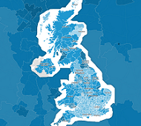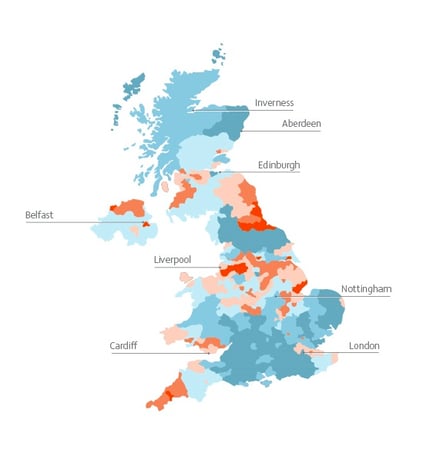- New insight from over 9.5m Lowell UK customer accounts reveals nearly as many people in default now as there were at the pandemic peak.
- This rise comes as households continue to rely on credit to meet the inflated cost of everyday necessities.
- Lowell UK CEO urges Government and industry to focus on long-term drivers of debt.
- The latest update to the Financial Vulnerability Index adds data across Q2 to Q4 2022.
As UK households grapple with the rising cost of living, the latest update to Lowell’s Financial Vulnerability Index (FVI), an innovative tool to measure and track financial resilience across the UK based on anonymised data from over 9.5 million Lowell UK customer accounts and other publicly available data, has shown that households are continuing to borrow and are increasingly falling into debt.
John Pears, UK CEO at Lowell, said: “What this new data shows us is a complex picture of financial health in the UK. Overall it might be getting better, but we’re still miles away from where we were before the pandemic. Dive a little deeper and we can see a range of issues bubbling under the surface.
“The decline in overall financial vulnerability is important, but it’s still high. Default rates are rising. We need to think about what we’re doing, at an industry and government level, to improve the country’s financial health over the long term. Topics such as teaching better
money management, helping people better understand financial products and destigmatising debt all need to be higher on the agenda.
“As an industry, we are on the frontline of the rising cost of living. By working with the Government and other industry bodies, we can help them fully understand the customer debt journey, ensure the credit system is working in everyone’s interests and address the underlying issues of financial vulnerability.”
What do the new figures show?
- Financial vulnerability is slowly returning to pre-pandemic levels – UK households’ financial health has been improving since the beginning of the COVID-19 pandemic but increases in the cost of living appear to be preventing a quicker return to pre-pandemic levels of financial health.
- Financial vulnerability fell 6.2 points from 47 in Q2 2020 to 40.8 in Q4 2022
- Financial vulnerability in Q4 2022 was at a level last seen between Q2 and Q3 2019
- The share of adults in default is edging up to peak levels seen at the beginning of the pandemic – The proportion of adults in default has risen to its joint highest level since Q4 2019 as households increase expenditure during the rising cost of living.
- Share of adults in default in Q4 2022 rose to 12.6% and has been steadily increasing since Q1 2022
- b. Increase in expenditure likely to drive higher defaults over the long term
- Credit use remains significantly higher than before the pandemic – Credit use has been on a clear rise since the start of the pandemic and remains well above pre-pandemic levels as households continue to borrow, despite rising interest rates, to meet the rising cost of living.
- Credit use in Q4 2022 was 52.3%
- Credit use has steadily increased since Q3 2017 and remains well above pre-pandemic levels that were usually below 50%
- The use of social benefits continues to decline from pandemic peak – Dependence on social benefits continues to fall from the high levels seen during the pandemic but remains higher than it was between 2017 and 2019.
- Share of social benefits claimants fell by 6.4% from when it peaked at 14.7% in Q3 2020 to 8.3% in Q4 2022
- Decline in claimant count is beginning to plateau at 8.3%, above pre-pandemic levels of under 7%
The Financial Vulnerability Index is an innovative tool to measure and track financial resilience, nationally and locally, across the UK. Created by Lowell and the Urban Institute, and provided by Opinium, the index brings together publicly available measures and Lowell’s proprietary data to give a clear picture of financial vulnerability in the UK.
The Financial Vulnerability Tool is free to access or alternatively you can download the data.
To find out more about our Financial Vulnerability Index you may be interested in the following articles:

|
Borrowing is not a choice but a necessity for many, shows latest Financial Vulnerability Index |

|
Levelling Up priority areas top of UK places most at risk of personal debt crisis |
